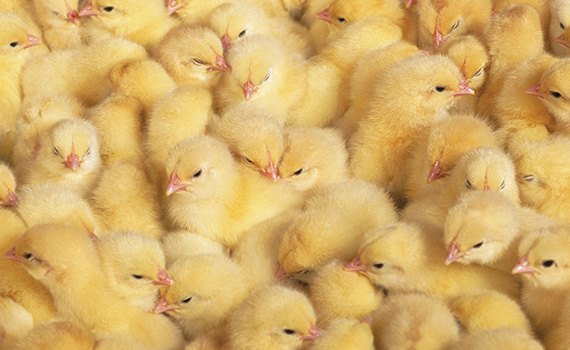Aggressive vaccination of broiler breeders needed to keep reovirus in check
Aggressive vaccination of broiler breeders for reovirus using live and inactivated vaccines has been one of the most important steps the US poultry industry has taken to maintain good protection against the disease, Guillermo Zavala, DVM, PhD, president of Avian Health International, told Poultry Health Today.
While autogenous vaccines have helped US poultry producers keep pace with the genetic changes of reoviruses, the original, federally licensed vaccines still form the core for most reovirus-vaccination programs and do a “very, very critical job” in establishing foundational immunity, he said.
Autogenous vaccines can be used to complement commercial vaccines but should not be a substitute for standard reovirus-vaccination programs. In addition, success with autogenous vaccines requires more than one diagnostic effort, he cautioned.
“You have to do enough sampling in the field. You have to do enough work in the laboratory. In other words, you have to do enough epidemiological investigation…,” Zavala said.
Signs of trouble
Reovirus vaccination, he explained, is aimed at hyper-immunizing broiler breeders to prevent vertical transmission to offspring. It can also provide maternal antibodies that should protect young broilers for the first 18 to 24 days. Thereafter, broilers need to develop their own active immunity, which can only be accomplished by exposure to field viruses or by vaccination. Vaccination of broilers is unnecessary if breeders are adequately immunized, Zavala said.
When reovirus does emerge, it’s generally in broilers that did not receive adequate immunity against the disease. The virus affects tendons and joints, and it can also affect the intestines. Birds with significant intestinal reovirus infection won’t convert feed as well. They will express uniformity problems and take longer to reach market age, Zavala said.
Once the intestinal tract is damaged — whether it’s reovirus alone or co-infections with other agents — the door is open for many types of complications, including secondary bacterial infections as well as other viruses.
Broiler flocks with reovirus may have increased condemnations at processing, particularly due to synovitis. Zavala said that should prompt questions. “Am I too lax with my vaccination program? Am I using not enough killed vaccines or not enough live vaccines or do I need to add an autogenous product?” he continued.
As with any infectious disease, protection against reovirus also requires guarding against immunosuppressive diseases such as Marek’s, infectious bursal disease or chicken infectious anemia virus. Immunosuppression can also be caused by other factors such as stress, suboptimal management or even mycotoxins in the feed.
“And I always tell people…you can have reovirus circulating in your farms and you may not have an economic or clinical problem, but you’ll start noticing it if you don’t protect your birds against immunosuppressive disease…”
Posted on April 18, 2019
 We’re glad you’re enjoying
We’re glad you’re enjoying










